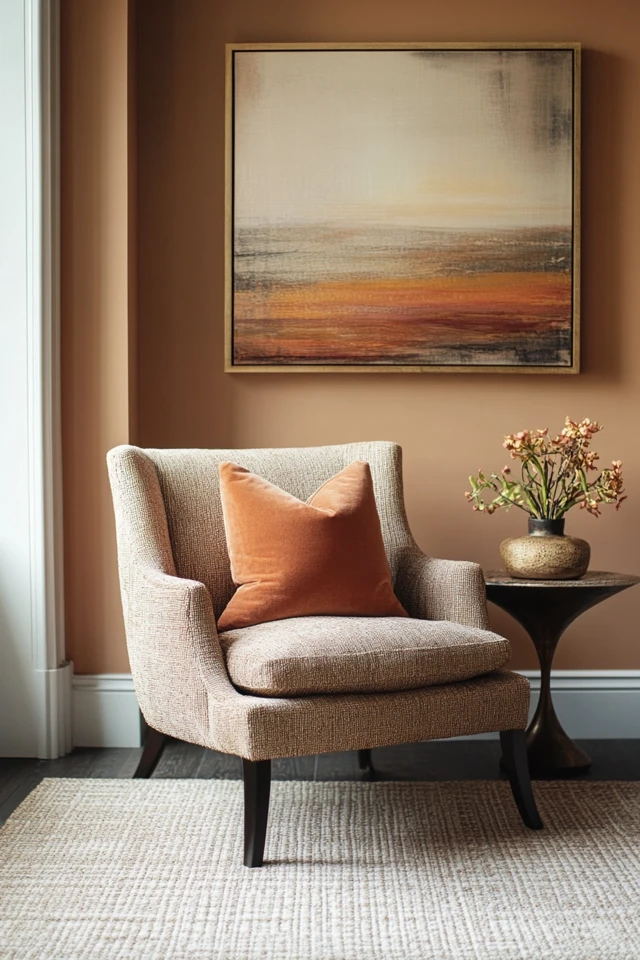Introduction
Creating a balanced room is an art form, and one of the most powerful tools in a designer’s arsenal is the interplay between warm and cool tones. These tones can dramatically influence the mood and energy of a space—warm tones like reds, yellows, and oranges evoke coziness and vibrancy, while cool tones like blues, greens, and purples bring calmness and serenity. The magic happens when these two worlds meet. When thoughtfully combined, warm and cool tones create rooms that feel harmonious, inviting, and visually dynamic.
I discovered the beauty of balancing tones while redesigning my living room. The space initially felt too sterile, dominated by cool grays and blues. By introducing warm mustard cushions, a rust-colored throw blanket, and a wooden coffee table, the room transformed into a space that felt both calming and cozy. The contrast between the tones brought life to the design, proving that the right balance can make all the difference.
This guide will explore how to mix warm and cool tones in your spaces to achieve perfect harmony. Whether you’re looking to energize a bedroom, create a serene living room, or design a dynamic dining area, these strategies will help you master the art of tonal balance for any room in your home.
The Perfect Design for You
Mixing warm and cool tones is perfect for anyone looking to create rooms that feel cohesive, comfortable, and full of character. This approach works well for those who enjoy variety in their color schemes and want to avoid spaces that feel overly one-note or monotonous.
Imagine a dining room where warm wood tones in the table and chairs contrast beautifully with a cool navy accent wall. Or picture a bedroom with soft blue bedding paired with warm terracotta pillows and gold accents, creating a serene yet inviting retreat. Balancing warm and cool tones allows you to enjoy the best of both worlds—spaces that feel both lively and relaxing.
Whether your style leans modern, traditional, eclectic, or minimalist, these techniques will help you incorporate warm and cool tones to elevate your home’s aesthetic.
Picture Gallery
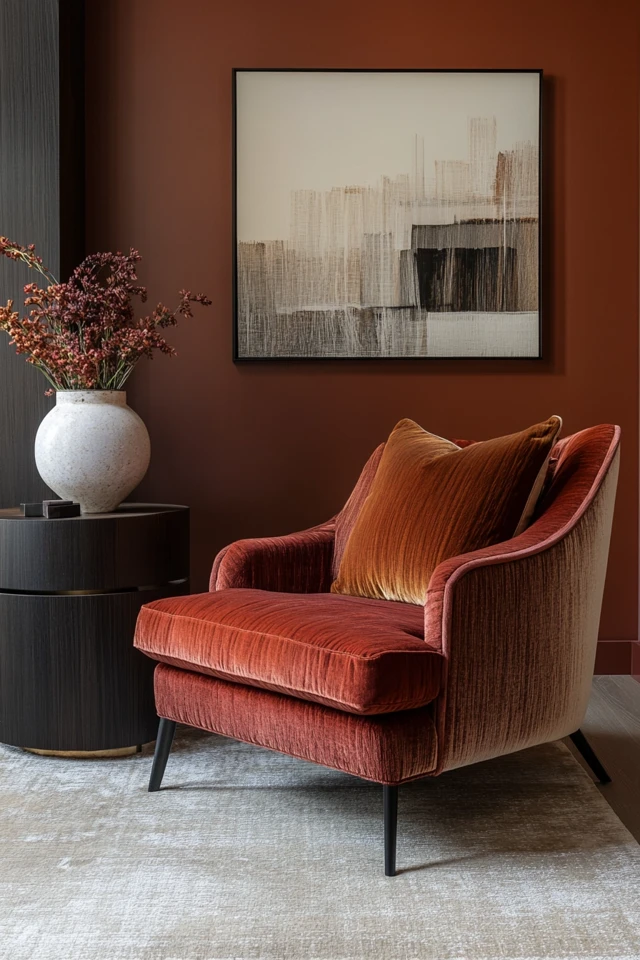
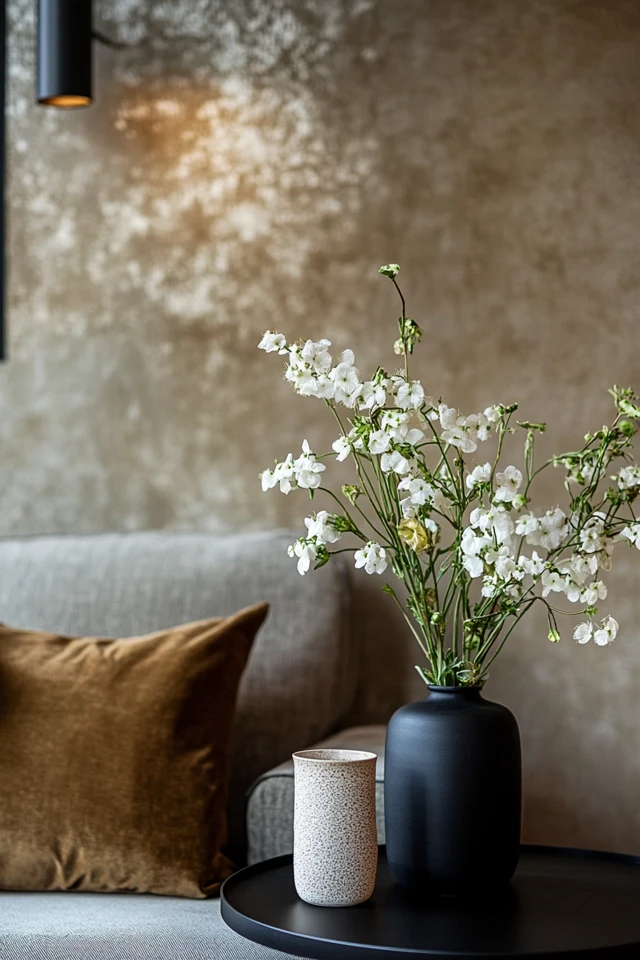

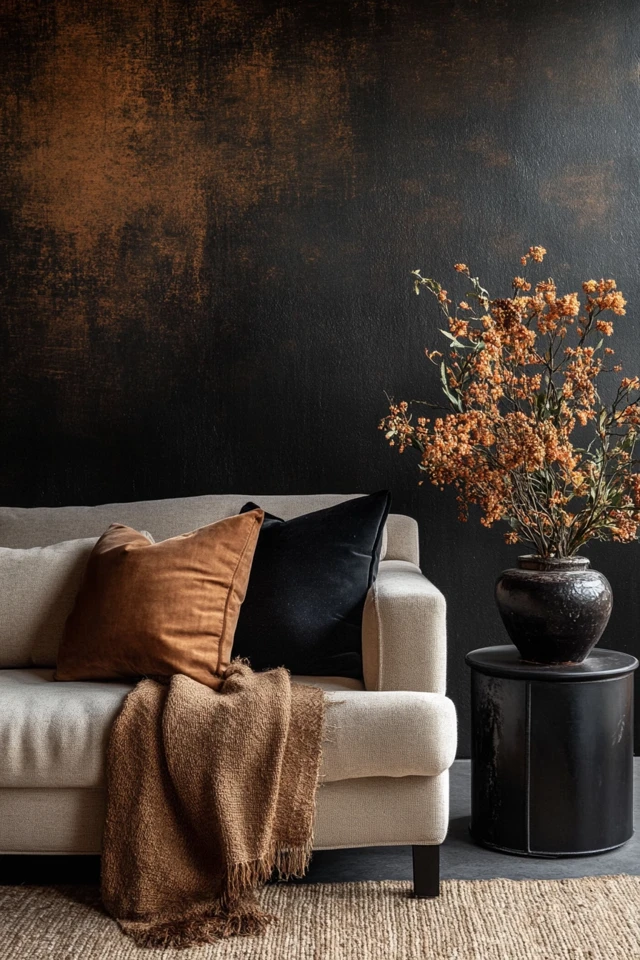
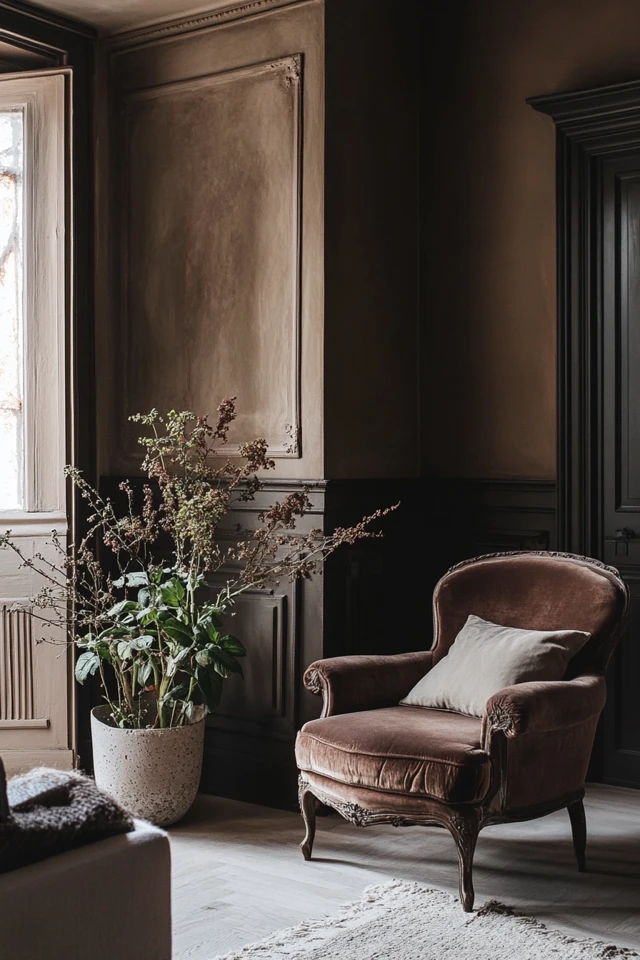
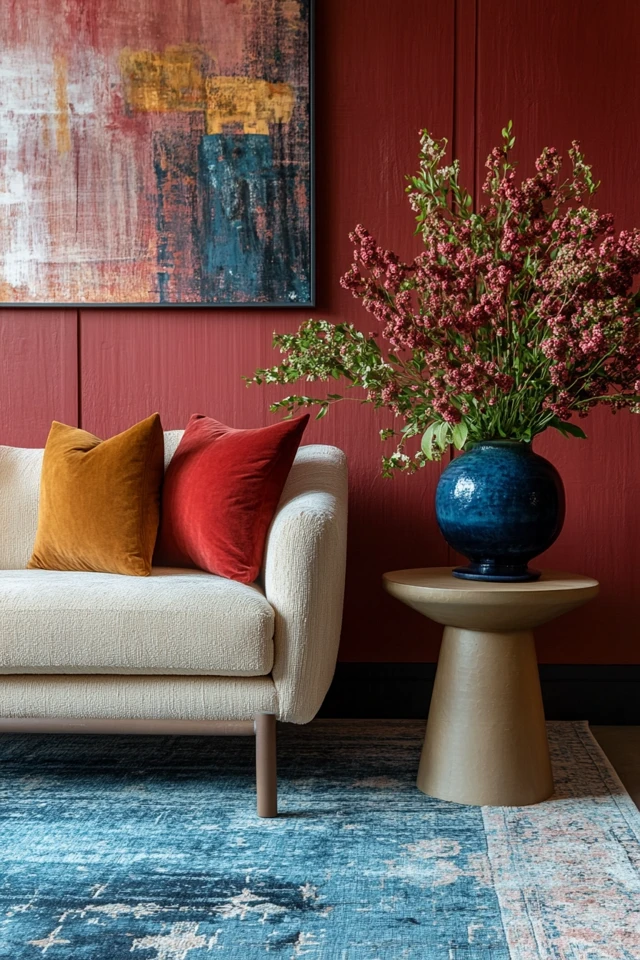
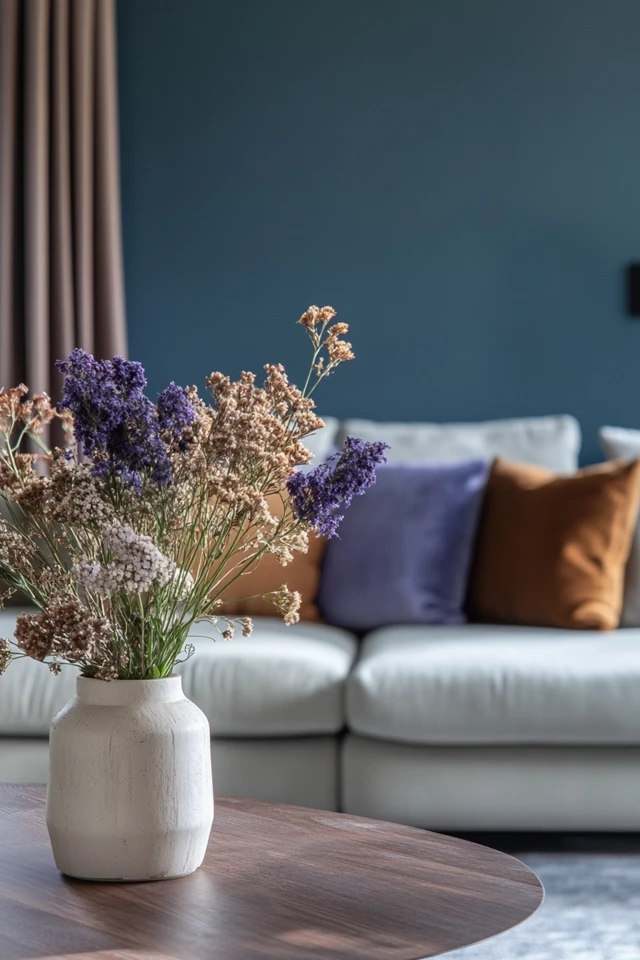
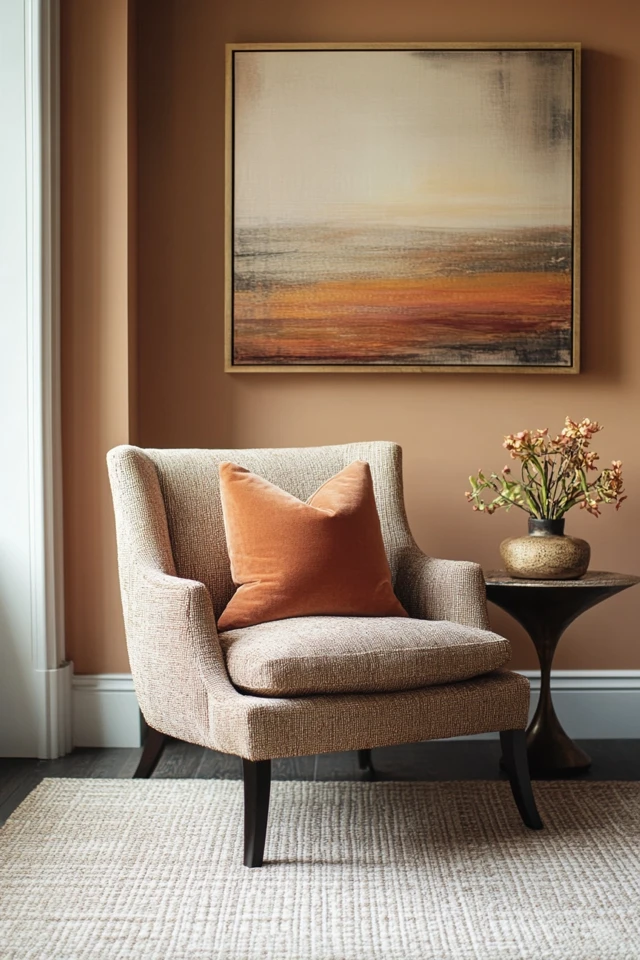
Why Mixing Warm and Cool Tones Works
The interplay between warm and cool tones creates a sense of balance and harmony that enhances the overall design of a space. Here’s why this approach is so effective:
- Visual Contrast: Warm and cool tones naturally contrast with each other, creating visual interest and preventing the space from feeling flat.
- Emotional Balance: Warm tones add energy and vibrancy, while cool tones bring calmness and relaxation. Together, they create a mood that feels just right.
- Dynamic Layers: Combining different tones adds depth and dimension to your design, making the space feel more layered and complete.
- Timeless Appeal: Balanced color schemes are universally appealing and can adapt to changing trends and seasons.
- Personalization: Mixing tones allows you to create spaces that reflect your unique preferences, from bold and dramatic to subtle and soothing.
Design theory highlights the importance of contrast and balance in creating harmonious interiors. By blending warm and cool tones, you can achieve spaces that feel cohesive, engaging, and perfectly attuned to your style.
How to Mix Warm and Cool Tones for Balanced Rooms: Step-by-Step
1. Start with a Dominant Tone
- Choose whether warm or cool tones will serve as the foundation of your room:
- For a cozy, inviting space, let warm tones dominate.
- For a calm, serene vibe, use cool tones as your base.
- Example: Paint the walls in a warm beige and balance them with cool blue furniture, or use a cool gray wall color with warm wood accents.
2. Incorporate the Opposite Tone as an Accent
- Add accents in the opposite tone to create contrast and balance:
- Use warm-toned pillows, rugs, or artwork in a cool-toned room.
- Add cool-toned decor like vases, curtains, or throws to a warm-toned space.
- Example: A living room with a navy sofa can feel balanced with rust-colored cushions or a brass lamp.
3. Play with Natural Materials
- Incorporate natural elements to effortlessly bridge the gap between warm and cool tones:
- Warm woods (like walnut or oak) add richness to cool-toned rooms.
- Stone or marble accents in cool grays or whites balance warm-toned spaces.
- Example: Pair a cool white kitchen with warm wooden stools or a terracotta planter.
4. Use a Neutral Base to Ground the Design
- Neutral tones (like white, beige, gray, or taupe) can act as a buffer between warm and cool colors:
- A gray sofa can balance both warm orange pillows and cool blue artwork.
- Beige walls provide a neutral backdrop for warm wooden furniture and cool green plants.
- Example: A bedroom with white bedding can feature both warm gold accents and cool navy curtains.
5. Layer Textures for Depth
- Use textured materials to enhance the interplay between warm and cool tones:
- Soft fabrics like velvet or wool in warm tones add coziness to cool spaces.
- Smooth surfaces like glass or metal in cool tones bring sleekness to warm environments.
- Example: A warm terracotta rug can contrast with cool gray linen curtains for a balanced, textured look.
6. Experiment with Metallics
- Metallic finishes are a versatile way to add warmth or coolness to a room:
- Gold, brass, or copper accents bring warmth.
- Silver, chrome, or steel finishes add a cool touch.
- Example: A cool-toned dining room with a navy wall can feel balanced with warm brass light fixtures and gold-framed mirrors.
7. Incorporate Art and Accessories
- Use artwork, sculptures, and decor to tie warm and cool tones together:
- A painting with both warm and cool colors can serve as a unifying piece.
- Accessories like colorful vases, candles, or books can add pops of contrasting tones.
- Example: Hang a piece of abstract art that combines warm oranges and cool blues to create harmony.
8. Use Lighting to Enhance the Balance
- Lighting plays a crucial role in how tones are perceived:
- Warm lighting (yellow-toned) enhances warm colors and adds coziness.
- Cool lighting (blue-toned) brings out cool colors and creates a fresh, modern feel.
- Layer lighting types to create a balanced ambiance.
9. Balance Large and Small Elements
- Distribute warm and cool tones throughout the room to create a sense of equilibrium:
- Use large pieces (like furniture or rugs) in one tone and balance them with smaller accents in the opposite tone.
- Avoid clustering all warm or cool items in one area—spread them out for balance.
10. Test and Adjust
- Experiment with different combinations to find the right balance:
- Try adding or removing items to see how the tones interact.
- Adjust the intensity of colors by opting for muted or pastel shades if the contrast feels too strong.
FAQ
1. What are warm tones and cool tones?
Warm tones include colors like red, orange, yellow, and brown, which evoke warmth and energy. Cool tones include blue, green, and purple, which are associated with calmness and serenity.
2. Can I mix warm and cool tones in a small space?
Yes! In smaller spaces, use lighter, muted versions of warm and cool tones to maintain a sense of openness while still achieving balance.
3. How do I prevent warm and cool tones from clashing?
Use a neutral base (like gray, white, or beige) to tie the tones together. Incorporating natural materials or artwork with both tones can also help unify the space.
4. Can I use bold warm and cool tones together?
Absolutely! Bold combinations like teal and mustard or coral and navy can create a dynamic, modern look when balanced with neutral accents.
5. What if my room feels too warm or too cool?
Add contrasting tones through accessories, textiles, or artwork to restore balance and create a more cohesive design.
Variations
- Modern Elegance: Combine cool grays with warm metallics like gold or brass for a sleek, sophisticated look.
- Bohemian Style: Pair warm terracotta and rust tones with cool teal or sage green for an earthy, eclectic vibe.
- Coastal Calm: Use cool blues and whites with warm sandy beiges and natural wood for a breezy, beach-inspired feel.
- Industrial Edge: Mix warm leather furniture with cool concrete finishes and steel accents for a bold, urban aesthetic.
- Traditional Warmth: Combine warm wood tones and reds with cool navy or hunter green for a timeless, classic look.
How to Showcase It
- Living Rooms: Use a warm-toned rug to anchor a cool gray sofa, or mix warm wooden furniture with cool blue curtains.
- Bedrooms: Pair soft blue bedding with terracotta pillows and gold bedside lamps for a serene yet cozy retreat.
- Kitchens: Combine warm wooden cabinets with cool-toned backsplash tiles or countertops.
- Dining Rooms: Use a navy accent wall to contrast with warm wood dining furniture and brass light fixtures.
- Bathrooms: Add cool green tiles and balance them with warm brass fixtures or wooden shelving.
Occasions to Feature It
- Seasonal Updates: Swap accents like pillows, throws, or rugs to adjust the balance of warm and cool tones for summer or winter.
- Entertaining Spaces: Use this technique in living or dining rooms to create an inviting atmosphere for guests.
- Relaxation Zones: Incorporate a mix of tones to make bedrooms or bathrooms feel both calming and comfortable.
- Creative Areas: Experiment with bold, contrasting tones in home offices or studios to spark energy and inspiration.
- Everyday Living: Enjoy the harmony and balance of mixed tones in any room, making your home feel effortlessly styled.
Conclusion
Mixing warm and cool tones is a surefire way to create rooms that feel balanced, dynamic, and uniquely yours. By thoughtfully blending these contrasting elements, you can achieve spaces that are both cozy and serene, vibrant and calming.
Whether you’re pairing cool walls with warm accents, using natural materials to tie tones together, or layering textures for depth, these techniques will help you master the art of tonal balance. The result? Rooms that feel cohesive, inviting, and perfectly styled for any occasion.
So, embrace the beauty of contrast and start experimenting with warm and cool tones in your home. With these tips, you’ll create spaces that not only look stunning but also feel just right.

